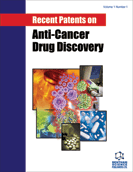
Abstract
Background: The forte of research today aims at determining genotoxic changes in human cells as rapidly as possible. Micronuclei estimation in exfoliated cells is an easy, noninvasive and a reliable method to monitor genotoxic changes due to various reasons in oral mucosal cells. Aims and Objectives: To identify, quantify and compare micronuclei in exfoliated buccal mucosal cells of healthy, oral submucous fibrosis (OSMF) and oral squamous cell carcinoma (OSCC) participants. Patients and Methods: In the present study, buccal smears from the 60 participants (30 each of OSMF and OSCC) and 30 age and sex matched controls were obtained and stained using Papanicolaou (PAP) staining method and observed under 100X magnification to identify and quantify micronuclei in the exfoliated cells of oral mucosa. Results: There was a significant increase in micronuclei count from control to OSMF to OSCC. Also, a significant increase in the micronuclei frequency is observed with the different clinical stages and histological grades of OSMF and different histological grades of OSCC. Conclusion: Micronucleus assay can be used as an easy and consistent marker for genotoxic evaluation in higher risk groups and can be used for better treatment evaluation and prognosis in cases of OSMF and OSCC. Some relevant patents are also outlined in this article.
Keywords: Buccal mucosal cells, exfoliative cytology, genotoxicity , micronuclei, OSMF, squamous cell carcinoma.
Recent Patents on Anti-Cancer Drug Discovery
Title:Quantitative Evaluation of Micronuclei in Oral Squamous Cell Carcinoma and Oral Submucous Fibrosis Patients: A Comparative Study
Volume: 10 Issue: 2
Author(s): Shreyas N. Shah, Bhari S. Manjunatha, Vandana S Shah, Kapil Dagrus, Nishit Soni and Sanjiv Shah
Affiliation:
Keywords: Buccal mucosal cells, exfoliative cytology, genotoxicity , micronuclei, OSMF, squamous cell carcinoma.
Abstract: Background: The forte of research today aims at determining genotoxic changes in human cells as rapidly as possible. Micronuclei estimation in exfoliated cells is an easy, noninvasive and a reliable method to monitor genotoxic changes due to various reasons in oral mucosal cells. Aims and Objectives: To identify, quantify and compare micronuclei in exfoliated buccal mucosal cells of healthy, oral submucous fibrosis (OSMF) and oral squamous cell carcinoma (OSCC) participants. Patients and Methods: In the present study, buccal smears from the 60 participants (30 each of OSMF and OSCC) and 30 age and sex matched controls were obtained and stained using Papanicolaou (PAP) staining method and observed under 100X magnification to identify and quantify micronuclei in the exfoliated cells of oral mucosa. Results: There was a significant increase in micronuclei count from control to OSMF to OSCC. Also, a significant increase in the micronuclei frequency is observed with the different clinical stages and histological grades of OSMF and different histological grades of OSCC. Conclusion: Micronucleus assay can be used as an easy and consistent marker for genotoxic evaluation in higher risk groups and can be used for better treatment evaluation and prognosis in cases of OSMF and OSCC. Some relevant patents are also outlined in this article.
Export Options
About this article
Cite this article as:
Shah N. Shreyas, Manjunatha S. Bhari, Shah S Vandana, Dagrus Kapil, Soni Nishit and Shah Sanjiv, Quantitative Evaluation of Micronuclei in Oral Squamous Cell Carcinoma and Oral Submucous Fibrosis Patients: A Comparative Study, Recent Patents on Anti-Cancer Drug Discovery 2015; 10 (2) . https://dx.doi.org/10.2174/1574892810666150317144817
| DOI https://dx.doi.org/10.2174/1574892810666150317144817 |
Print ISSN 1574-8928 |
| Publisher Name Bentham Science Publisher |
Online ISSN 2212-3970 |
 31
31 1
1
- Author Guidelines
- Graphical Abstracts
- Fabricating and Stating False Information
- Research Misconduct
- Post Publication Discussions and Corrections
- Publishing Ethics and Rectitude
- Increase Visibility of Your Article
- Archiving Policies
- Peer Review Workflow
- Order Your Article Before Print
- Promote Your Article
- Manuscript Transfer Facility
- Editorial Policies
- Allegations from Whistleblowers
Related Articles
-
Developments of Polo-like Kinase 1 (Plk1) Inhibitors as Anti-Cancer Agents
Mini-Reviews in Medicinal Chemistry Non Polymeric Nanoparticles for Photodynamic Therapy Applications: Recent Developments
Current Medicinal Chemistry Orai1 and Transient Receptor Potential Channels as Novel Molecular Targets to Impair Tumor Neovascularization in Renal Cell Carcinoma and other Malignancies
Anti-Cancer Agents in Medicinal Chemistry Recent Developments in Taxane Drug Delivery
Current Drug Delivery Advances of AKT Pathway in Human Oncogenesis and as a Target for Anti-Cancer Drug Discovery
Current Cancer Drug Targets Vascular Homing Peptides with Cell-Penetrating Properties
Current Pharmaceutical Design Current Status of SUMOylation Inhibitors
Current Medicinal Chemistry To Investigate Growth Factor Receptor Targets and Generate Cancer Targeting Inhibitors
Current Topics in Medicinal Chemistry Studies of NVP-BEZ235 in Melanoma
Current Cancer Drug Targets Application of In Vivo Electroporation to Cancer Gene Therapy
Current Gene Therapy Synthesis and Cytotoxic Activities of a Curcumin Analogue and Its bis- Mannich Derivatives
Letters in Drug Design & Discovery Challenges for Drug Discovery - A Case Study of Urokinase Receptor Inhibition
Combinatorial Chemistry & High Throughput Screening The Association between NADPH Oxidase 2 (NOX2) and Drug Resistance in Cancer
Current Cancer Drug Targets The FDG-PET Revolution of Medical Imaging – Four Decades and Beyond
Current Molecular Imaging (Discontinued) Mechanisms for Radioprotection by Melatonin; Can it be Used as a Radiation Countermeasure?
Current Molecular Pharmacology Cyclization: A Useful Approach for the Synthesis of Nitrogen Heterocyclic N-Oxides
Current Organic Chemistry Cucurbitacins: Nature’s Wonder Molecules
Current Traditional Medicine Apicidin Inhibited Proliferation and Invasion and Induced Apoptosis via Mitochondrial Pathway in Non-small Cell Lung Cancer GLC-82 Cells
Anti-Cancer Agents in Medicinal Chemistry Engineered Nanoparticles in Cancer Therapy
Recent Patents on Drug Delivery & Formulation Impact of PLK-1 Silencing on Endothelial Cells and Cancer Cells of Diverse Histological Origin
Current Gene Therapy


























